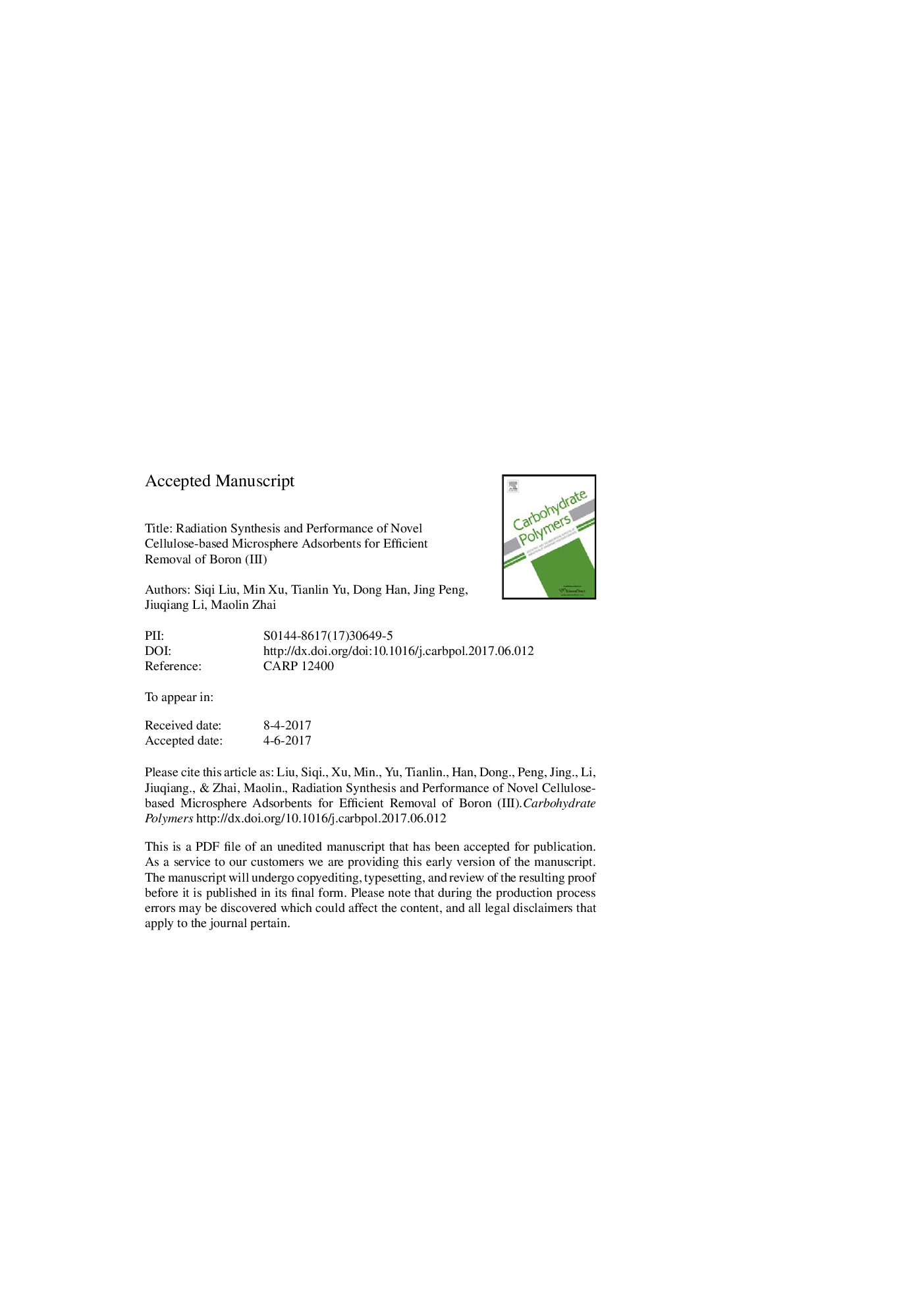| Article ID | Journal | Published Year | Pages | File Type |
|---|---|---|---|---|
| 5156808 | Carbohydrate Polymers | 2017 | 32 Pages |
Abstract
A novel cellulose-based microsphere containing glucamine groups, referred as CVN, was successfully synthesized by radiation-induced graft polymerization of 4-vinylbenzyl chloride onto cellulose microspheres and subsequent functionalization with N-methyl-d-glucamine. The adsorption by CVN for boron (III) from aqueous solutions was evaluated systematically by batch adsorption technique. Langmuir models could fit well with the adsorption behavior of CVN. The CVN adsorbents exhibited a high adsorption capacity up to 12.4 mg gâ1 towards boron (III) over the wide pH range of 5-8. After the addition of chloride salts, the boron uptake of CVN was enhanced that was attributed to the compensation of the surface charge generated by boron (III) adsorption leading to favor the adsorption. At high concentrations of salts, the ionic strength and different salts have no effect on the adsorption of boron(III). This work provides a new sustainable, cost effective material as a promising specific adsorbent for the removal of boron (III) from saline solutions.
Keywords
Related Topics
Physical Sciences and Engineering
Chemistry
Organic Chemistry
Authors
Siqi Liu, Min Xu, Tianlin Yu, Dong Han, Jing Peng, Jiuqiang Li, Maolin Zhai,
